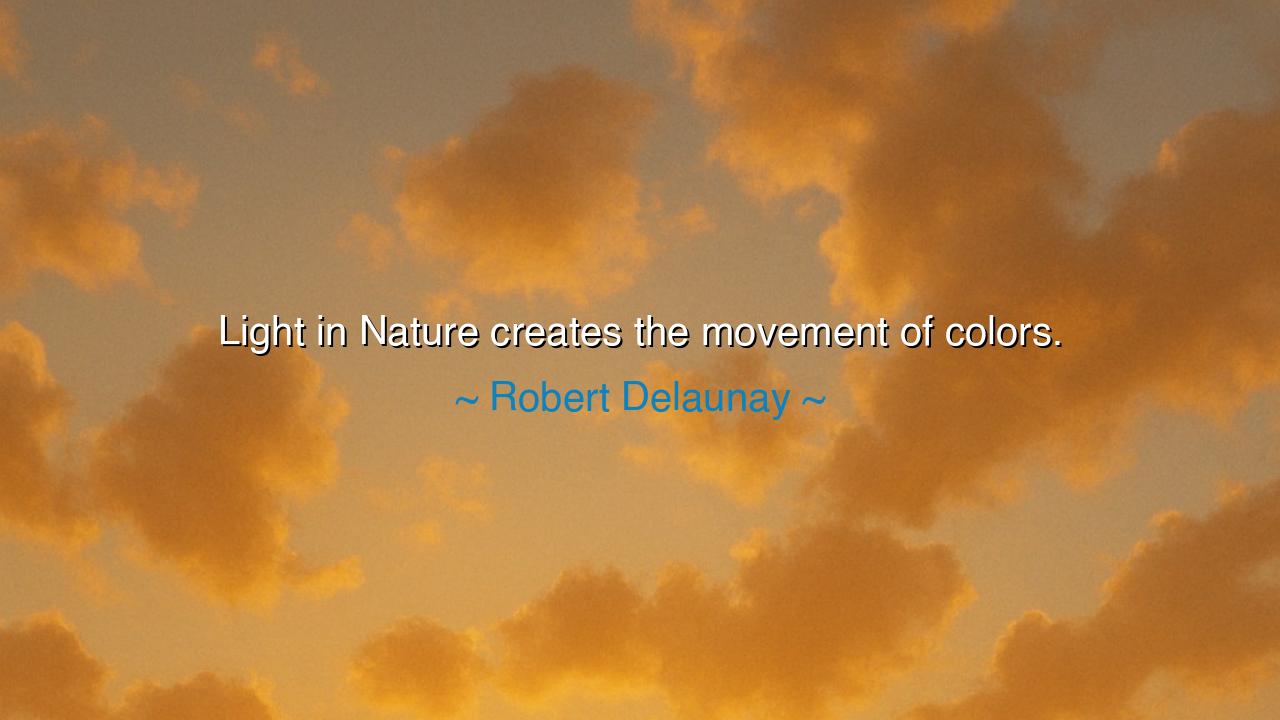
Light in Nature creates the movement of colors.






Hear the radiant words of Robert Delaunay, painter of light and rhythm: “Light in Nature creates the movement of colors.” In this saying lies a vision not only for the artist’s eye but for the soul of humanity. For Delaunay, a master of abstraction and Orphism, light was not passive brightness, but the primal force that awakens and animates. Without it, colors are still and dead; with it, they dance, they shimmer, they move. He saw in Nature not static forms, but living energy — a perpetual motion born of light itself, the eternal fire that paints the world anew each dawn.
The ancients too revered light as the first principle. In Genesis, creation began with the words, “Let there be light,” before land, sea, or creature existed. To the Greeks, Helios drove his flaming chariot across the heavens, and from his passage came warmth, vision, and life. In the East, the Vedas called light the essence of truth, the divine spark within all things. Thus, when Delaunay proclaimed that light creates the movement of colors, he echoed this ancient wisdom: that without light, the world is empty shadow; with it, existence becomes vibrant, fluid, and alive.
Consider the rainbow, that covenant between heaven and earth. It is not paint hung in the sky, but the union of sun and rain, light scattering into its hidden spectrum. Each hue moves, shifts, and fades into the next, reminding us that life itself is not stillness but transition. The rainbow teaches us that beauty lies in motion, that color is not fixed but born anew in each moment of changing light. Delaunay saw this truth and built it into his art, creating canvases where circles and shapes pulsed with the rhythm of the sun.
History offers us another witness to this truth: the Gothic cathedrals of Europe. Their stained glass windows, dark when seen without the sun, come alive when touched by light. Reds blaze like fire, blues deepen like oceans, greens pulse like spring leaves. The builders knew that stone alone could not move the soul; but when light passed through color, it created movement, a living sermon in glass that drew hearts upward toward the divine. This is what Delaunay understood: that color without light is mute, but with it, it sings.
The deeper meaning is this: light is not only physical, but spiritual. Just as natural light awakens color, so the inner light of truth, love, and inspiration awakens the colors of the human spirit. A soul in darkness may appear dull, lifeless, and still. But when touched by the light of hope or faith, it glows with movement — joy, compassion, creativity. In this way, Delaunay’s vision transcends the painter’s brush: it is a teaching for life itself.
The lesson for us is profound: seek the light, both in nature and within. Do not live in shadows, where colors remain dormant. Step into the radiance of truth, beauty, and goodness, and let it awaken movement within you. Just as flowers turn their faces toward the sun, so must we turn our hearts toward what gives life. Then our own lives, like colors stirred by light, will become vivid, radiant, and full of motion.
Practical action flows naturally from this truth. Go outside and observe the light — how it changes the world each hour, how the same tree can appear solemn in morning gold, fierce in noon brightness, and tender in evening rose. Train your eyes to see the dance of colors, for in seeing, you will learn to live more fully. Inwardly, seek what enlightens you — wisdom, love, acts of kindness — and let these guide your path. Then, share this light with others, so that their own colors may come alive.
So let Delaunay’s words echo through your spirit: “Light in Nature creates the movement of colors.” For life itself is a canvas, and each of us is a color awaiting illumination. When the light touches us, we are no longer still — we move, we shine, we join the great harmony of creation, radiant and alive.






AAdministratorAdministrator
Welcome, honored guests. Please leave a comment, we will respond soon